Instructions for changing Pagefile.sys size and location on Windows
Although Pagefile.sys takes up a lot of space in your drive, the computer uses it to maintain the storage of important data in the computer instead of deleting these data when RAM is overloaded.
To free up space and drive space, you can change Pagefile.sys size and location on your computer.
1. What is Pagefile.sys?

Windows uses a file called Pagefile.sys as a virtual memory because the RAM in the machine can only record a certain amount.
Pagefile.sys is located in the hard drive or SSD (C: pagefile.sys) to support the limited write ability of RAM in the computer when needed.
Your computer will prioritize the use of RAM to store data because its accessibility is faster than hard drive. However, when RAM is full or overloaded, Windows will automatically transfer data from RAM to Pagefile.sys in the hard drive.
Although Pagefile.sys takes up a lot of space in your drive, the computer uses it to maintain the storage of important data in the computer instead of deleting these data when RAM is overloaded.
2. Resize Pagefile.sys
1. To change Pagefile.sys size, you must access the Windows Advanced System Settings .
To access Windows Advanced System Settings, on the Start Menu, type the System keyword in the Search frame, then click the System option displayed in Control Panel.
If you're using Windows 8, press Win + X and then select System on the Power User Menu.
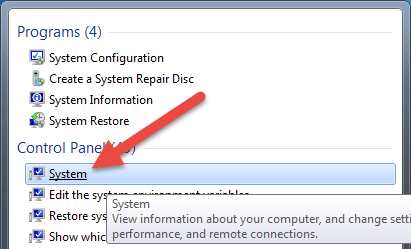
2. On the System interface, click to select Advanced System Settings to open the Advanced System Properties window.
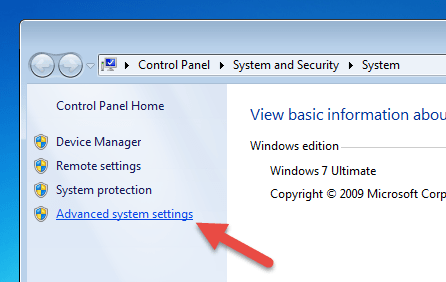
3. Next click Settings under the Performance section to open the Performance Options window.
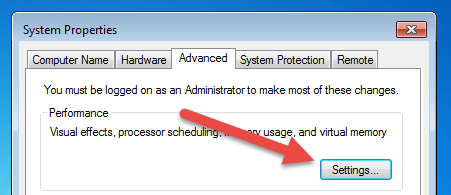
4. Click the Advanced tab and select the Change button to open the Virtual Memory window.
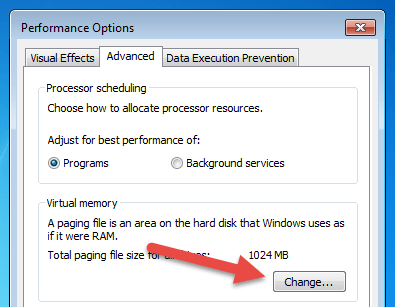
5. In the Virtual Memory window, uncheck the Automatically manage paging file size for all drives option, select the Custom Size option .
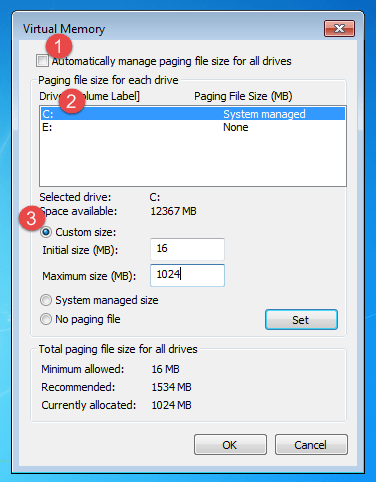
At Custom size option, adjust the size you want to change in Initial size and Maximum size and then click OK to save the changes.
Finally close all windows and then restart your system to apply changes.
3. Change Pagefile.sys location
To change the Pagefile.sys location, first take the first four steps as shown in the Pagefile.sys resize.
In the Virtual Memory window, uncheck Automatically manage paging file size for all drives.
Check the No Paging File option , then click Set .

Next select the drive you want to store Pagefile.sys. Select System managed size then click Set to apply the change.

After you're done, click OK to close all windows.

Finally proceed to restart your system. So you have changed the Pagefile.sys storage location on Windows.
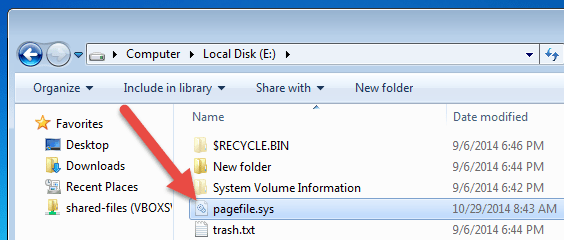
You can refer to some of the following articles:
-
What is Hiberfil.sys? How to delete Hiberfil.sys?
-
What is Pagefile.sys? Can pagefile.sys be deleted?
-
What is Swapfile.sys, how to delete Swapfile.sys?
I wish you and your family a happy and prosperous New Year!
You should read it
- Clean up traces of Pagefile every time you turn off your Windows 10 computer
- How to automatically delete Pagefile.sys on shutdown in Windows 10
- Instructions for changing Pagefile size and position on Windows
- What is Pagefile.sys and should it be disabled?
- What is Swapfile.sys, how to delete Swapfile.sys?
- How to manage Pagefile virtual memory in Windows 10
- How to Show Hidden Files in Windows 7
- What is a DLL file, and how does this file work?
May be interested
- How to Change Location Settings in Windows 8
 windows 8 includes a built-in location platform that informs apps, web pages, and networks of your regional location. while this service tailors ads and content to best suit your needs, location services can also be invasive. you can...
windows 8 includes a built-in location platform that informs apps, web pages, and networks of your regional location. while this service tailors ads and content to best suit your needs, location services can also be invasive. you can... - How to Make Desktop Icons Smaller
 for mac and pc users, changing the size of desktop icons is as simple as right-clicking on the desktop and changing settings in the 'view', 'view options' or 'properties' areas. things get tricky when it comes to iphones and android...
for mac and pc users, changing the size of desktop icons is as simple as right-clicking on the desktop and changing settings in the 'view', 'view options' or 'properties' areas. things get tricky when it comes to iphones and android... - Turn off location tracking on Windows 10
 windows 10 will collect the user's location to provide relevant information such as local weather, and some other information. however, if you feel uncomfortable or don't want windows 10 to track your location, you can turn off location tracking on windows 10.
windows 10 will collect the user's location to provide relevant information such as local weather, and some other information. however, if you feel uncomfortable or don't want windows 10 to track your location, you can turn off location tracking on windows 10. - How to resize Windows 11 widgets
 windows 11 allows users to change the position and size of widgets as you like. this helps to optimize the layout of the widgets panel interface on windows 11.
windows 11 allows users to change the position and size of widgets as you like. this helps to optimize the layout of the widgets panel interface on windows 11. - How to change Telegram wallpaper, change Telegram message font size
 just like the feature of changing chat background on zalo, with telegram you can also change the background, choose a messaging background using telegram images or use images downloaded from the album on your phone.
just like the feature of changing chat background on zalo, with telegram you can also change the background, choose a messaging background using telegram images or use images downloaded from the album on your phone. - How to block themes from changing icons on Windows 11 screen
 applying a new theme in windows 11 can instantly update the icons displayed on your computer. this article will guide you to prevent themes from changing icons on the windows screen.
applying a new theme in windows 11 can instantly update the icons displayed on your computer. this article will guide you to prevent themes from changing icons on the windows screen. - Instructions on how to add FTP, Network Location drives on Windows 7, 8
 if you are looking for a way to assign, add network location or ftp drive, access data and folders on an ftp server in a normal windows environment, the following article is worth a try. with this way, we can easily access the shared folders on the server right in windows explorer after setting up correctly.
if you are looking for a way to assign, add network location or ftp drive, access data and folders on an ftp server in a normal windows environment, the following article is worth a try. with this way, we can easily access the shared folders on the server right in windows explorer after setting up correctly. - How to turn off location tracking on Windows 11
 to prevent microsoft and other apps from tracking your location on your computer, you should turn off location tracking on your windows 11 computer.
to prevent microsoft and other apps from tracking your location on your computer, you should turn off location tracking on your windows 11 computer. - How to delete location history on Windows 11
 if you want to delete location history on windows 11, tipsmake.com will send you two ways to do it. the first way is using windows settings and the second way is using the windows maps application.
if you want to delete location history on windows 11, tipsmake.com will send you two ways to do it. the first way is using windows settings and the second way is using the windows maps application. - Change text size, applications and items in Windows 10 Mobile
 changing the text size, applications and other items in windows 10 mobile allows you to display more of the app's content and icons on the screen of a large device like the phablet, or you simply want things to be larger so you can see more easily.
changing the text size, applications and other items in windows 10 mobile allows you to display more of the app's content and icons on the screen of a large device like the phablet, or you simply want things to be larger so you can see more easily.






 Concept of UEFI standard in computers
Concept of UEFI standard in computers Fix high ping errors when playing games
Fix high ping errors when playing games How to create a hot key for Windows to sleep and shutdown
How to create a hot key for Windows to sleep and shutdown 9 damaging the fastest laptop screen!
9 damaging the fastest laptop screen! If you want to master Windows, master these shortcuts
If you want to master Windows, master these shortcuts What is Hiberfil.sys? How to delete Hiberfil.sys?
What is Hiberfil.sys? How to delete Hiberfil.sys?